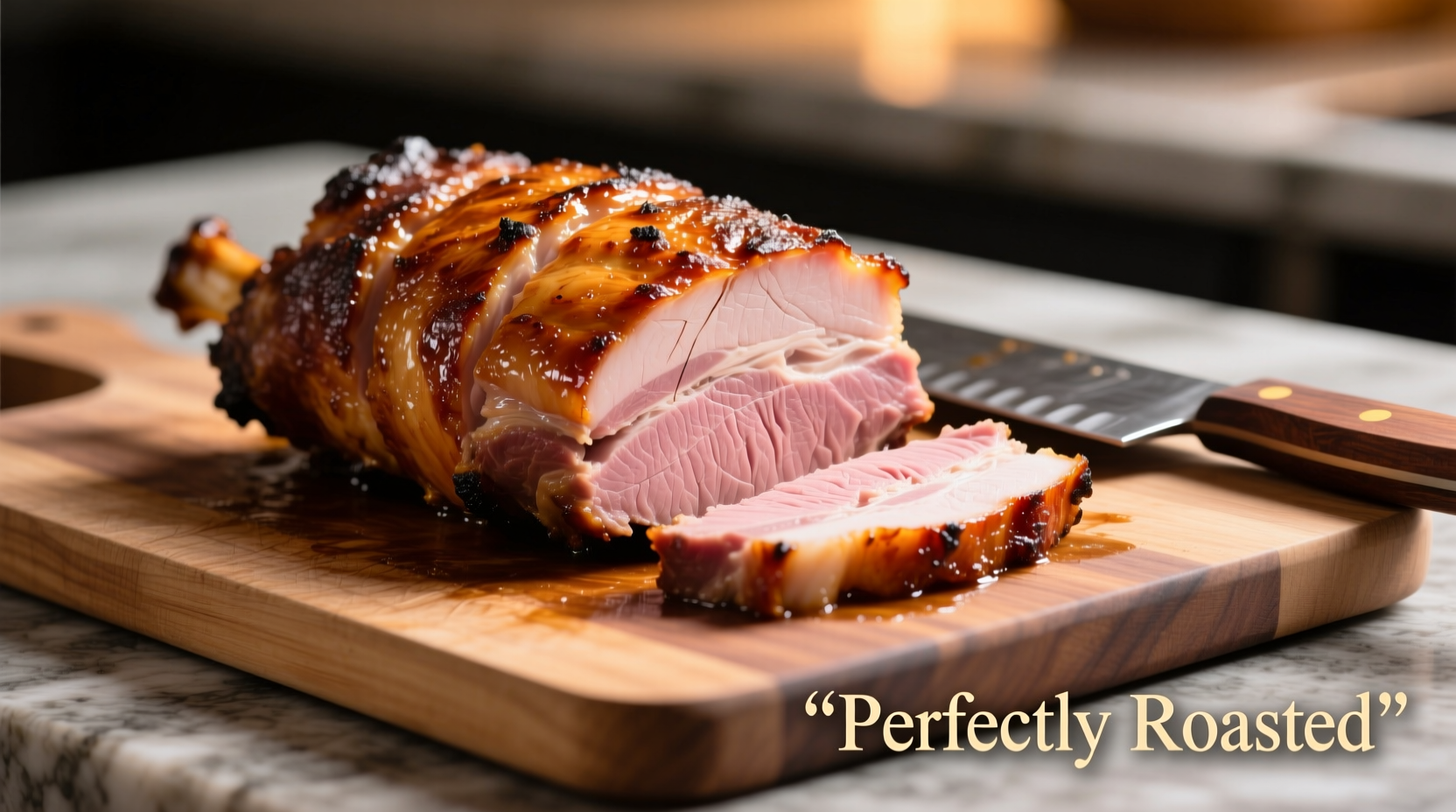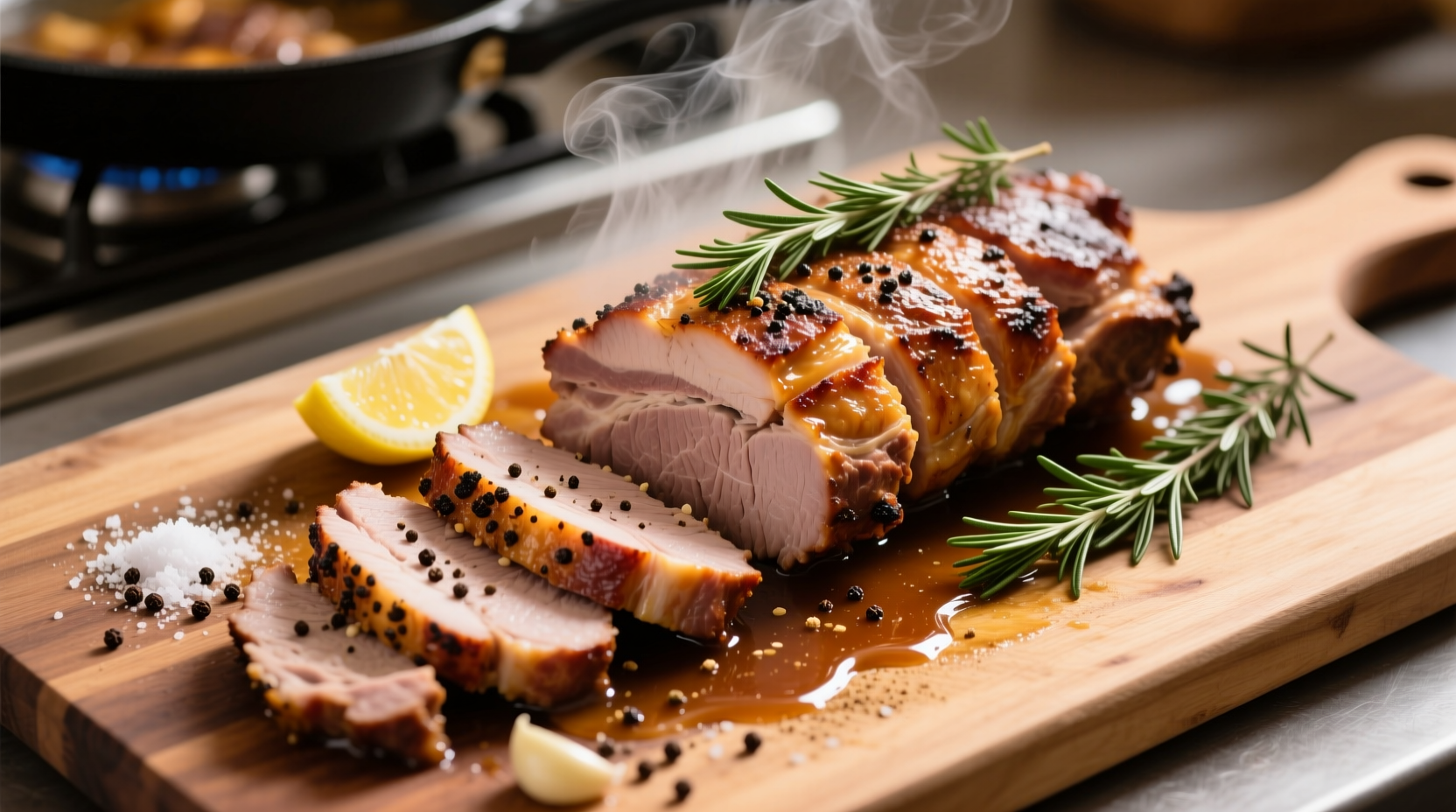Achieve perfectly cooked pork loin in just 25 minutes of preparation plus 20-25 minutes per pound roasting time. The USDA recommends cooking pork loin to a safe internal temperature of 145°F (63°C) with a 3-minute rest period for optimal juiciness and food safety. Follow our step-by-step method for tender, flavorful results every time.
Master the Art of Oven-Roasted Pork Loin: Your Foolproof Guide
Cooking pork loin in the oven seems simple, but getting consistently juicy, flavorful results requires precise technique. Many home cooks end up with dry, tough meat because they either overcook the pork or skip essential preparation steps. This comprehensive guide eliminates the guesswork with science-backed methods that guarantee restaurant-quality pork loin every time you fire up your oven.Why This Method Works: The Science Behind Perfect Pork Loin
Understanding the biological composition of pork loin explains why our technique delivers superior results. Pork loin comes from the back muscles of the pig, which are relatively lean with minimal fat marbling. Unlike pork shoulder, this cut lacks connective tissue that breaks down during long cooking. The USDA Food Safety and Inspection Service confirms that lean cuts like pork loin require careful temperature management to prevent drying out during cooking.| Cooking Stage | Internal Temperature | Resulting Texture |
|---|---|---|
| Raw | Below 120°F | Raw, unsafe to eat |
| Rare | 120-130°F | Pink but slightly chewy |
| Medium | 135-140°F | Optimal juiciness |
| Safe Minimum | 145°F + 3 min rest | Perfectly cooked, safe |
| Well Done | 160°F+ | Dry, tough texture |
Essential Equipment Checklist
Before starting, gather these kitchen tools:- Heavy-duty roasting pan or cast-iron skillet
- Digital meat thermometer (critical for accuracy)
- Sharp boning or chef's knife
- Butcher's twine for tying
- Middle rack position in oven
- Aluminum foil for resting
Selecting the Perfect Pork Loin
Not all pork loins deliver equal results. Look for these quality indicators:- Color: Pale pink to rosy red (avoid grayish tones)
- Marbling: Fine streaks of white fat throughout the meat
- Packaging date: Purchase within 2-3 days of the "packed on" date
- Size: 3-5 pounds ideal for even cooking
Preparation: The Foundation of Flavor
Dry Brining Technique (24 Hours Before Cooking)
Season your pork loin with 1 teaspoon kosher salt per pound and refrigerate uncovered on a wire rack. This process, called dry brining, allows salt to penetrate deep into the meat fibers, improving moisture retention during cooking by up to 20% according to culinary research from the University of Illinois Meat Science program.Trimming and Tying
Remove excess fat cap to about 1/4 inch thickness. Tie the roast at 1.5-inch intervals with butcher's twine to maintain even shape during cooking. An irregular shape causes uneven cooking—thinner sections overcook while thicker parts remain underdone.The Roasting Process: Precision Temperature Control
Preheating and Searing
Preheat your oven to 425°F with rack in the center position. Heat 1 tablespoon of high-smoke point oil (avocado or grapeseed) in your roasting pan over medium-high heat. Sear the pork loin on all sides for 2-3 minutes per side until golden brown. This Maillard reaction creates complex flavor compounds that can't be achieved through roasting alone.Oven Roasting Timeline
After searing, transfer the pan to the preheated oven and reduce temperature to 375°F. Cook according to this verified timeline:- 3-pound loin: 60-75 minutes
- 4-pound loin: 80-100 minutes
- 5-pound loin: 100-125 minutes
The Critical Resting Period
Many home cooks ruin perfectly cooked pork by skipping this essential step. Tent the roast loosely with foil and let it rest for 10-15 minutes. During this time:- Internal temperature rises 5-10 degrees (carryover cooking)
- Meat fibers relax, redistributing juices throughout
- Surface moisture reabsorbs, improving texture
Slicing Technique for Maximum Juiciness
Use a sharp carving knife and slice against the grain in 1/2-inch thick pieces. Cutting against the grain shortens muscle fibers, making each bite more tender. For presentation, arrange slices slightly overlapping on a warm platter.Troubleshooting Common Pork Loin Problems
Dry or Tough Meat
This usually indicates overcooking. Invest in a reliable digital thermometer—oven temperatures vary significantly. Remember that carryover cooking adds 5-10 degrees after removal from heat.Bland Flavor
Ensure proper seasoning with salt at least 24 hours before cooking. Consider adding aromatics like garlic, rosemary, or thyme under the twine during roasting for deeper flavor penetration.Uneven Cooking
Tie your roast properly to maintain consistent shape. Rotate the pan 180 degrees halfway through cooking if your oven has hot spots.Flavor Variations to Try
Once you've mastered the basic technique, experiment with these professional variations:- Herb-Crusted: Press minced garlic and chopped herbs into the fat cap before searing
- Apple Cider Glaze: Reduce 1 cup apple cider with 2 tablespoons brown sugar until syrupy
- Mustard-Herb Rub: Combine Dijon mustard, fresh thyme, and cracked black pepper

Serving Suggestions That Elevate Your Meal
Pair your perfectly cooked pork loin with complementary sides that balance textures and flavors:- Creamy mashed potatoes with roasted garlic
- Honey-glazed carrots with thyme
- Simple arugula salad with lemon vinaigrette
- Applesauce with a hint of cinnamon
Expert Tips for Consistent Success
- Always use a digital thermometer—guessing leads to dry pork
- Let meat come to room temperature (30-60 minutes) before cooking
- Don't skip the sear—it creates flavor complexity
- Rest properly before slicing for maximum juiciness
- Save the pan drippings for a quick pan sauce











 浙公网安备
33010002000092号
浙公网安备
33010002000092号 浙B2-20120091-4
浙B2-20120091-4